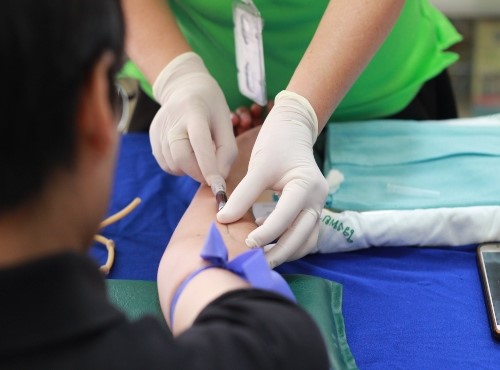
Whether you feel the need to perform an act of altruism or whether you’re nervous about coming up with sufficient rent money this month, donating plasma can help you do good and receive compensation for it. Millions of people donate their plasma for numerous reasons. Plasma saves lives, and researchers also use the substance to develop treatments for myriad conditions.
If you’ve never donated plasma before, no doubt you have many questions. Forewarned is forearmed when it comes to any medical procedure, and you’ll want to know how much your donation may hurt, whether you may experience any adverse outcomes and how much money you can make. Read on to learn seven things to know before you sign up to donate for the first time.
1. Who Is Eligible to Donate Plasma?
To donate, you must be eligible to do so. Those who suffer from certain diseases are ineligible, as are those who weigh less than 110 pounds. In addition, taking certain medications can disqualify you, as can having a tattoo or piercing within the previous year.
To donate, you must not be pregnant or nursing. You must be 18 or older to donate as well. Those who test positive for HIV or hepatitis are ineligible as are those who have traveled to certain areas or who have had blood cancers such as leukemia. Other disqualifying factors include chronic fatigue syndrome (CFS), Chagas disease and anemia.
2. How Long Does Donating Plasma Take?
When you donate plasma, plan on your first appointment lasting at least two hours. This is to allow adequate time to take a thorough health history and ascertain you are well enough to donate. Subsequent appointments generally take approximately 90 minutes.
One important note — at least two plasma donations are necessary to rule out any diseases. Therefore, if you go only once and never return, your plasma cannot be used to help others. Plan on making at least two donations, more if you hope the process will supplement your income.
3. Does Donating Plasma Hurt?
In general, donating plasma hurts no more than getting blood drawn for a medical test. You’ll receive a finger stick, and then the needle is inserted into your arm in the same manner it is for a blood draw or regular donation of whole blood. During the process, your blood enters a centrifuge, where the plasma is separated from the other components of the fluid, which are then returned to your body via a sterile saline solution.
Your centrifuged blood reveals quite a bit about your health. For example, the buffy coat, a layer consisting of white blood cells and platelets, can reveal the presence of malaria, a disqualifying condition. It also can reveal the presence of leukemia.
4. How Much Money Can You Make?
The amount of money you make per donation depends upon your body weight with averages ranging from $20-$50 per donation up to twice weekly.
While the Red Cross only allows donation every 28 days, with private centers, you can donate as often as twice per week as long as you allow at least 24 hours in between appointments. Theoretically, you can earn up to $300 per month donating plasma. Not too shabby for a few hours of your time.
5. What Should You Wear on Donation Day?
Some plasma donation centers do have dress codes and failure to follow them may even result in being turned away. In general, longer pants or skirts are the most appropriate, since some report feeling cold when they donate. For tops, wear loose-fitting sleeves which can be rolled up easily or a tee-shirt.
As mentioned, some who donate report feeling cold due to the temporary loss of blood volume. It’s a good idea to bring along a favorite blanket, although most centers stock such items for patient comfort.
6. How Many Lives Can You Save?
Exact statistics prove challenging to come by as many plasma donors give the substance multiple times. However, according to the American Red Cross, each donation of whole blood saves approximately three lives.
Not only does donating plasma save lives, it can improve the quality of life for those suffering from certain conditions. Researchers use plasma to treat certain diseases such as forms of hepatitis, as the substance cannot be duplicated in the laboratory. Other scientists experiment with plasma to potentially treat diseases such as certain forms of arthritis.
7. Are There Any Negative Health Effects Associated With Donating?
In general, donating plasma is very safe. Most patients experience discomfort on the level of a bee sting. However, as with any medical procedure, risks do exist.
Common side effects of plasma donation include nausea, dizziness and vertigo. Rarely, patients experience a citrate reaction from the substance used to help the blood coagulate, which requires medical attention. Bruising at the injection site is another common reaction, and rarely, an arterial puncture may occur. Choosing an accredited donation site helps ensure your phlebotomist is well trained in how to do blood draws even on people with tough-to-find veins.
Is Donating Plasma Right for You?
Donating plasma can help you earn extra spending cash while saving lives and improving the quality of life of others. But ultimately, only you can decide if donating plasma is right for you. If money is tight, consider giving of yourself by donating plasma today.






Be the first to comment